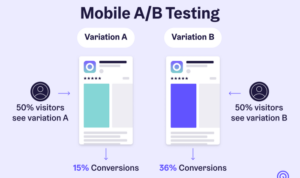Starting with Understanding Customer Journey, get ready to dive into the world of customer experience like never before. From uncovering the importance to exploring the stages and touchpoints, this journey promises to be an eye-opening ride.
Let’s begin by unraveling the key aspects of customer journey mapping and how businesses can leverage this knowledge to enhance their relationships with customers.
Importance of Understanding Customer Journey

Understanding the customer journey is crucial for businesses as it allows them to gain valuable insights into the behavior and preferences of their customers. By analyzing the different touchpoints and interactions a customer has with a company, businesses can tailor their marketing strategies and improve the overall customer experience.
Benefits of Analyzing Customer Journey, Understanding Customer Journey
- Identifying pain points: Analyzing the customer journey helps businesses pinpoint areas where customers may be facing challenges or frustrations, allowing them to make necessary improvements.
- Personalization: By understanding the customer journey, companies can personalize their communication and offerings based on individual preferences and behaviors, leading to increased customer satisfaction and loyalty.
- Optimizing marketing efforts: Through customer journey analysis, businesses can identify the most effective channels and messaging to reach their target audience, resulting in better ROI on marketing campaigns.
Improving Customer Experience with Journey Mapping
Customer journey mapping involves visually representing the various stages a customer goes through when interacting with a company, from initial awareness to post-purchase support. This process helps businesses identify opportunities to enhance customer experience by addressing pain points, streamlining processes, and providing personalized touchpoints throughout the journey.
Stages of Customer Journey

When it comes to understanding the customer journey, it’s essential to know the different stages that a customer typically goes through. These stages include awareness, consideration, and decision, each playing a crucial role in shaping the overall customer experience.
Awareness Stage
In the awareness stage, customers become aware of a particular need or problem they have. This is where they start researching and looking for solutions to address their issue. Businesses can capture customers’ attention by creating informative content, such as blog posts, social media posts, or videos, that highlight their products or services.
Consideration Stage
During the consideration stage, customers evaluate different options available to them. They compare features, prices, and reviews to determine which product or service best fits their needs. Businesses can stand out in this stage by providing detailed product information, offering customer testimonials, and showcasing the benefits of choosing their brand over competitors.
Decision Stage
In the decision stage, customers are ready to make a purchase. They have narrowed down their choices and are ready to commit. Businesses can seal the deal by providing a seamless buying process, offering discounts or promotions, and providing excellent customer service to ensure a positive purchasing experience.
Customer Touchpoints
In the customer journey, touchpoints refer to any interaction a customer has with a brand or business. These touchpoints can occur online, through social media, in-store, over the phone, or via email. Each touchpoint provides an opportunity for the business to engage with the customer and make an impression.
Examples of Common Touchpoints
- Website: When a customer visits a company’s website to browse products or services.
- Social Media: Interactions on platforms like Facebook, Instagram, or Twitter.
- In-Store Experience: The physical store environment and interactions with employees.
- Customer Service: Dealing with a support representative over the phone or through live chat.
- Email Marketing: Receiving promotional emails or newsletters from the company.
Significance of Optimizing Touchpoints
Optimizing touchpoints is crucial for enhancing the overall customer experience. By ensuring that each interaction is seamless, personalized, and consistent across all channels, businesses can build stronger relationships with their customers. This can lead to increased customer loyalty, higher retention rates, and ultimately, more revenue for the company.
Implementing Customer Journey Mapping
To create an effective customer journey map, businesses need to follow a series of steps to accurately capture the customer experience. Gathering data and identifying pain points are crucial elements in this process.
Steps in Creating a Customer Journey Map
- Define customer personas: Start by understanding your target audience and creating detailed personas that represent different customer segments.
- Identify touchpoints: Map out all the interactions a customer has with your business, from initial awareness to post-purchase support.
- Create a timeline: Plot out the customer journey timeline, including key milestones and touchpoints along the way.
- Analyze customer feedback: Gather feedback from customers through surveys, interviews, and social media to understand their experiences.
- Identify pain points: Highlight areas where customers may be experiencing challenges or frustrations during their journey.
Best Practices for Gathering Data
- Utilize analytics tools: Use tools like Google Analytics to track customer behavior on your website and identify patterns.
- Conduct customer interviews: Engage directly with customers to get insights into their experiences and preferences.
- Monitor social media: Keep an eye on social media channels to see what customers are saying about your brand and how they are interacting with it.
- Collaborate with different departments: Work with sales, marketing, and customer service teams to gather data from various touchpoints.
Using Customer Journey Maps for Improvement
- Identifying pain points: Customer journey maps can help businesses pinpoint areas where customers are facing challenges, allowing them to address these issues and improve the overall experience.
- Enhancing customer satisfaction: By understanding the customer journey, businesses can tailor their products and services to meet customer needs and expectations more effectively.
- Driving loyalty and retention: Improving the customer experience at every touchpoint can lead to increased customer loyalty and retention rates, ultimately boosting business success.





